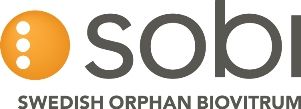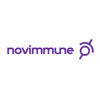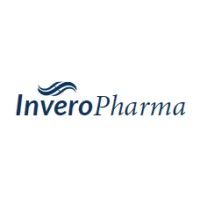预约演示
更新于:2025-05-07
Postoperative Complications
术后并发症
更新于:2025-05-07
基本信息
别名 Complication, Postoperative、Complication;post-op、Complications, Postoperative + [27] |
简介 Pathologic processes that affect patients after a surgical procedure. They may or may not be related to the disease for which the surgery was done, and they may or may not be direct results of the surgery. |
关联
283
项与 术后并发症 相关的药物作用机制 CD38抑制剂 [+4] |
在研适应症 |
非在研适应症 |
最高研发阶段批准上市 |
首次获批国家/地区 美国 |
首次获批日期2020-05-01 |
靶点 |
作用机制 C5抑制剂 |
最高研发阶段批准上市 |
首次获批国家/地区 美国 |
首次获批日期2018-12-21 |
靶点 |
作用机制 IFNγ抑制剂 |
原研机构 |
在研适应症 |
最高研发阶段批准上市 |
首次获批国家/地区 美国 |
首次获批日期2018-11-20 |
3,356
项与 术后并发症 相关的临床试验NCT04763837
Migration of Intraureteral Stents Compared to Conventional Double-J Stents.
The purpose of this study is to determine if stents placed with only one loop in the kidney move more than stents placed with a loop in both the kidney and a bladder. Participants in this study will undergo placement of a stent into the ureter that drains urine from the kidney into the bladder. The stent will be placed in 1 of 2 ways: either with only a loop of the stent is left in the kidney or in the regular manner where a loop of the stent is left in both the kidney and in the bladder. The position of the stent will be measured at the time of placement. When the stent is removed, the position of the stent will be measured prior to pulling the stent.
开始日期2027-02-01 |
申办/合作机构 |
NCT06825143
Therapeutic Strategies to Reduce Endothelial Ischemia-reperfusion Injury with Metabolic Syndrome: a Combination Approach with Lactate Administration and Ischemic Preconditioning
The objective of this clinical trial is to better understand how lactate, a naturally occurring energy substance, can be used to lessen damage to the vascular system in adults with a high cardiovascular disease risk.
The main questions it aims to answer are:
1. Does giving lactate intravenously reduce injury to the vascular system?
2. Does giving lactate intravenously together with blood flow occlusion - known as ischemic preconditioning, reduce vascular injury better than blood flow occlusion by itself?
3. How does lactate help the vascular system?
Researchers will compare lactate to a placebo (a look-alike substance that contains no lactate) to see if lactate works to lessen vascular injury.
Researchers will also compare lactate to blood flow occlusion to see which one is better at preventing vascular injury.
Researchers will also compare lactate and blood flow occlusion together to see if combining them works better than either one alone.
In one visit to the laboratory, participants will:
Obtain a measurement of vascular health in an arm Be given liquid lactate, a liquid placebo, and/or arm blood flow occlusion Obtain a second measurement of vascular health in an arm.
The main questions it aims to answer are:
1. Does giving lactate intravenously reduce injury to the vascular system?
2. Does giving lactate intravenously together with blood flow occlusion - known as ischemic preconditioning, reduce vascular injury better than blood flow occlusion by itself?
3. How does lactate help the vascular system?
Researchers will compare lactate to a placebo (a look-alike substance that contains no lactate) to see if lactate works to lessen vascular injury.
Researchers will also compare lactate to blood flow occlusion to see which one is better at preventing vascular injury.
Researchers will also compare lactate and blood flow occlusion together to see if combining them works better than either one alone.
In one visit to the laboratory, participants will:
Obtain a measurement of vascular health in an arm Be given liquid lactate, a liquid placebo, and/or arm blood flow occlusion Obtain a second measurement of vascular health in an arm.
开始日期2026-10-01 |
申办/合作机构- |
NCT03176186
XePOHCAS - Xenon by Inhalation for Post Out of Hospital Cardiac Arrest Syndrome
XePOHCAS: Prospective, randomized, multicenter interventional trial in adult subjects with out-of-hospital cardiac arrest comparing treatment with standard-of-care post-cardiac arrest intensive care (which is targeted temperature management [TTM]) to xenon by inhalation plus standard-of-care post-cardiac arrest intensive care (including TTM).
开始日期2026-03-01 |
申办/合作机构 |
100 项与 术后并发症 相关的临床结果
登录后查看更多信息
100 项与 术后并发症 相关的转化医学
登录后查看更多信息
0 项与 术后并发症 相关的专利(医药)
登录后查看更多信息
104,033
项与 术后并发症 相关的文献(医药)2025-12-31·Annals of Medicine
Severe postoperative complications after minimally invasive esophagectomy reduce the long-term prognosis of well-immunonutrition patients with locally advanced esophageal squamous cell carcinoma
Article
作者: Xu, Shao-Jun ; Chen, Chao ; Luo, Yun-Fan ; Chen, Rui-Qin ; You, Cheng-Xiong ; Chen, Shu-Chen ; Zhang, Zhi-Fan
2025-12-31·Virulence
Protection acquired upon intraperitoneal group a
Streptococcus
immunization is independent of concurrent adaptive immune responses but relies on macrophages and IFN-γ
Article
作者: Westerlund, Elsa ; Persson, Jenny J ; Johansson-Lindbom, Bengt ; Rojas Converso, Thiago ; Emami, Shiva
2025-12-31·Annals of Medicine
Predicting postoperative complications after pneumonectomy using machine learning: a 10-year study
Article
作者: Liu, Jiayun ; Cui, Yong ; Guan, Aika ; Li, Wenya ; Tan, Wenfei ; Wang, Yaxuan ; Xie, Shiyang ; Yu, Jiangang ; Xu, Shun ; Wang, He
284
项与 术后并发症 相关的新闻(医药)2025-04-29
AUSTIN, Texas--(BUSINESS WIRE)--Natera, Inc. (NASDAQ: NTRA), a global leader in cell-free DNA and genetic testing, announced the results of its DEFINE-HT clinical trial in heart transplantation, which were shared today, April 29, 2025, in an oral presentation at the International Society for Heart and Lung Transplantation 45th Annual Meeting in Boston, MA.
DEFINE-HT is the first prospective, multicenter study in heart transplant recipients designed to assess whether elevated levels of donor-derived cell-free DNA (dd-cfDNA), as measured by Prospera Heart with DQS, are associated with adverse clinical outcomes. Following heart transplant, Prospera testing was performed concurrently with rejection surveillance monitoring, including endomyocardial biopsies (EMB), for up to one year.
Findings from the study, which included more than 1,100 dd-cfDNA samples, demonstrated that dd-cfDNA significantly correlated with adverse outcomes, a composite endpoint defined as the total number of treated rejections, graft dysfunctions, re-transplantations, and deaths at one year after heart transplant.
Key findings include:
Patients with at least one elevated dd-cfDNA measurement were significantly more at risk for experiencing an adverse event (HR: 2.56, p=0.0299).
Elevated dd-cfDNA predicted graft dysfunction 3x more than biopsy.
Prospera with DQS demonstrated a stronger correlation with clinical outcomes compared to donor fraction alone.
“The results of DEFINE-HT show that dd-cfDNA can predict clinical outcomes after heart transplantation, which can allow for improved and personalized patient management based on individual risk,” said Palak Shah, M.D., M.S., national principal investigator for DEFINE-HT, director of the Inova Cardiovascular Genomics Center, and medical director of mechanical circulatory support at Inova Fairfax Medical Campus. “Through vigorous research, we continue to drive innovative advancements in heart transplantation, finding less invasive approaches that lead to better patient outcomes.”
“In combination with a better understanding of the association of dd-cfDNA and clinical outcomes, DEFINE-HT underscores the utility of Prospera as a tool to help identify patients who may be at risk for adverse outcomes,” said Michael Olympios, M.D., medical director, heart transplant at Natera. “Importantly, the insights gained from this study suggest that Prospera has the potential to obviate invasive surveillance EMB, which will be investigated in an ongoing multi-center, randomized, comparative effectiveness study comparing dd-cfDNA and EMB surveillance (ACES-EMB).”
About Prospera
The Prospera™ test leverages Natera’s core single-nucleotide (SNP)-based massively multiplexed PCR (mmPCR) technology to identify allograft rejection non-invasively and with high precision and accuracy, without the need for prior donor or recipient genotyping. The test works by measuring the fraction of donor-derived cell-free DNA (dd-cfDNA) in the recipient’s blood. It may be used by physicians considering the diagnosis of active rejection, helping to rule in or out this condition when evaluating the need for diagnostic testing or the results of an invasive biopsy. The Prospera test has been clinically and analytically validated for performance regardless of donor relatedness, rejection type, and clinical presentation.
About Natera
Natera™ is a global leader in cell-free DNA and genetic testing, dedicated to oncology, women’s health, and organ health. We aim to make personalized genetic testing and diagnostics part of the standard-of-care to protect health and inform earlier, more targeted interventions that help lead to longer, healthier lives. Natera’s tests are supported by more than 250 peer-reviewed publications that demonstrate excellent performance. Natera operates ISO 13485-certified and CAP-accredited laboratories certified under the Clinical Laboratory Improvement Amendments (CLIA) in Austin, Texas, and San Carlos, California. For more information, visit www.natera.com.
Forward-Looking Statements
All statements other than statements of historical facts contained in this press release are forward-looking statements and are not a representation that Natera’s plans, estimates, or expectations will be achieved. These forward-looking statements represent Natera’s expectations as of the date of this press release, and Natera disclaims any obligation to update the forward-looking statements. These forward-looking statements are subject to known and unknown risks and uncertainties that may cause actual results to differ materially, including with respect to whether the results of clinical or other studies will support the use of our product offerings, the impact of results of such studies, our expectations of the reliability, accuracy and performance of our tests, or of the benefits of our tests and product offerings to patients, providers and payers. Additional risks and uncertainties are discussed in greater detail in “Risk Factors” in Natera’s recent filings on Forms 10-K and 10-Q and in other filings Natera makes with the SEC from time to time. These documents are available at www.natera.com/investors and www.sec.gov.
临床结果临床研究
2025-04-29
WALTHAM, Mass.--(BUSINESS WIRE)--Paragonix Technologies, a leader in organ transplant technologies and organ procurement services, announces new research presented during the 45th ISHLT Annual Meeting and Scientific Sessions. The expansive study compared long-term outcomes of donor hearts preserved with the Paragonix SherpaPak® Cardiac Transport System, an FDA-cleared and CE-marked device, to those stored on conventional ice storage over four years post transplantation.
Drawing on data from the GUARDIAN-Heart Registry, the study compared four-year mortality rates between the SherpaPak System and ice storage in US adult heart transplant recipients. In a propensity-matched analysis, researchers found a 54% reduction in 4-year mortality (p=0.018), and an improvement in survival at each yearly interval compared to historical ice storage.1
72% Reduction in 1 Year Mortality (Ice – 23/243 (9.5%) vs SherpaPak - 2/243 (2.7%), p=0.003 ) 1
68% Reduction in 2 Year Mortality (Ice – 32/241 (13.3%) vs SherpaPak - 9/213 (4.2%), p<0.001 ) 1
52% Reduction in 3 Year Mortality (Ice – 39/235 (16.6%) vs SherpaPak - 13/165 (7.9%), p=0.010 ) 1
54% Reduction in 4 Year Mortality (Ice – 39/177 (22.0%) vs SherpaPak - 9/88 (10.2%), p=0.018 ) 1
Additionally, researchers found that hearts transported with a SherpaPak System had a 50% reduction in severe primary graft dysfunction (PGD) (p=0.017) and a 63% reduction in severe right ventricular dysfunction (RVD) (p=0.007). The study concluded that the utilization of the SherpaPak System for organ preservation was associated with improved post-transplant outcomes, including a statistically significant survival advantage over four years. 1
Researchers presented additional findings from the GUARDIAN-Heart Registry at the conference, which concluded:
Compared to conventional ice storage, use of the SherpaPak System was linked to a lower development of cardiac allograft vasculopathy (CAV), one of the most common late-term morbidities in heart transplant. Researchers presented data that found that patients in the SherpaPak cohort had significantly lower rates of any CAV in years three and four, with year four exhibiting 17.7% (SherpaPak) vs. 23.6% (Ice) ( p =0.047). 2
In an analysis of Global Adult Extended Criteria Donors, the SherpaPak System was associated with a reduction in post-transplant clinical complications, including a 26% reduction in post-transplant mechanical circulatory support (0.043) , a 31% reduction in PGD (p=0.020) , and a 61% reduction in severe RVD (p<0.001) . 3
A study on rehospitalizations in the first year after heart transplantation found a significant increase in freedom from all-cause rehospitalization (p=0.003) , including cardiovascular-related rehospitalizations (p=0.017) using the SherpaPak System in comparison to ice storage. 4
“Our research indicates that the use of moderate, controlled hypothermia not only significantly reduced the risk of Severe PGD and severe RVD, but also significantly reduced mortality through 4 years post-transplant,” said Dr. David D’Alessandro, Director of Heart Transplantation and Ventricular Assist Devices at Massachusetts General Hospital.
"These landmark findings represent monumental progress in heart transplantation technology and research. The GUARDIAN Registry research data clearly demonstrates that patients whose donor hearts were preserved with the Paragonix SherpaPak experience a statistically significant improvement in outcomes,” said Lisa Anderson, Ph.D., President of Paragonix Technologies. “At Paragonix, we remain committed to working alongside the transplant community to ensure every donor gift has the greatest chance to save and sustain life."
Paragonix is committed to working closely with transplant centers, organ procurement organizations, and healthcare professionals to ensure broad accessibility of its Advanced Organ Preservation technology, including the SherpaPak System, which is utilized across over 130 programs globally to preserve and protect donor hearts.
For more information about Paragonix Advanced Organ Preservation devices, please visit www.paragonix.com.
About Paragonix Technologies
Paragonix Technologies is a leading developer, manufacturer, and service provider in the organ transplant industry, establishing a novel approach to organ preservation.
A Getinge company, Paragonix Technologies provides Advanced Organ Preservation (“AOP”) devices that safeguard donor organs during the journey between donor and recipient patients. Our FDA-cleared and CE-marked devices incorporate clinically proven and medically trusted cold preservation techniques that allow unprecedented physical and thermal protection to the organ during transit. All Paragonix AOP devices are natively integrated with our novel digital app, delivering real-time organ tracking data and monitoring logistics for transplant teams seeking a secure and centralized solution. For more information, visit www.paragonix.com.
About Getinge
With a firm belief that every person and community should have access to the best possible care, Getinge provides hospitals and life science institutions with products and solutions aiming to improve clinical results and optimize workflows. The offering includes products and solutions for intensive care, cardiovascular procedures, operating rooms, sterile processing and life science. Getinge employs approximately 12,000 people worldwide and the products are sold in more than 135 countries.
Connect with us on LinkedIn: Paragonix Technologies
Follow us on X (formerly twitter): @ParagonixSherpa
Find us on YouTube: Paragonix SherpaPak
References
D'Alessandro et al., 2025 ISHLT Presentation 2025, Data on File
Uriel et al., 2025 ISHLT Presentation 2025, Data on File
Moayedifar et al., 2025 ISHLT Presentation 2025, Data on File
Khush et al. 2025 ISHLT Presentation 2025, Data on File
Disclaimer
Comparison of Paragonix systems to Ice Storage, Paragonix data on file. GUARDIAN is a registered clinical study funded and administered by Paragonix Technologies. The data from the registry is descriptive, not statistically powered, and not pre-specified. The information should be interpreted accordingly.
临床结果AHA会议
2025-04-26
TAIPEI, April 25, 2025 /PRNewswire/ -- Taiwan-based Formosa Pharmaceuticals ("Formosa", 6838.TW) announced that the company has entered into an exclusive licensing agreement with Laboratorios Saval ("Saval"), a Chilean-based pharmaceutical company operating in Central and South America, for exclusive rights to the commercialization of clobetasol propionate ophthalmic suspension, 0.05% (APP13007), a marketed innovative treatment of post-operative inflammation and pain following ocular surgery. Saval, a family-owned pharmaceutical company founded in 1938, boasts its own internal R&D and GMP manufacturing facilities, while holding international strategic partners. Clobetasol propionate ophthalmic suspension, 0.05% (APP13007), approved by the U.S. Food and Drug Administration (FDA) in March, 2024, was launched in the United States in September. The licensing agreement includes upfront payment and milestones, with additional considerations throughout the term of the agreement.
APP13007's active ingredient is the superpotent corticosteroid, clobetasol propionate, and is derived from Formosa Pharma's proprietary APNT® nanoparticle formulation platform. The novel formulation enables a convenient and straightforward dosing regimen (twice daily for 14 days) while providing rapid and sustained relief of inflammation and pain. In a recent US survey of 100 ophthalmic surgeons, rapid resolution of pain (~80% pain-free four days post-surgery) and low incidence of adverse events (<2%) were highlighted as key drivers to prescribing APP13007. APP13007 anticipates having significant potential in Saval's territories, whose ophthalmic corticosteroid market is estimated at almost USD $7.5 million, currently led by treatments with a less convenient dosing regimen (4 to 6 times daily).
"We are pleased that Saval has identified APP13007 as a worthy therapy to include in their ophthalmology core business unit. Saval's vast network throughout Latin America will guarantee that patients recovering from ocular surgery will have access to APP13007." said Erick Co, President and CEO of Formosa Pharmaceuticals.
"At Saval we are committed to providing patients with affordable and high-quality products in a broad range of therapeutic areas throughout Latin America. Ophthalmology is part of our core and APP13007 will provide physicians and patients with an innovative and valuable addition to the available treatment options. We are pleased to partner with Formosa Pharmaceuticals and look forward to working together for Latin American patients and physicians" said Nicolás Donoso, CEO of Laboratorios Saval.
About Formosa Pharmaceuticals, Inc.
Formosa Pharmaceuticals, Inc. (6838.TW) is a clinical stage biotechnology company with primary focus in the areas of ophthalmology and oncology. The company's proprietary nanoparticle formulation technology (APNT®), through which APP13007 was developed, improves the dissolution and bioavailability of APIs for topical, oral, and inhaler administration. Resulting formulations have high uniformity, purity, and stability, thereby allowing the utilization of poorly soluble or extremely potent drug agents which otherwise may face insurmountable challenges in safety, delivery, and penetration to target tissues. For more details about Formosa Pharma and APNT®, visit .
About Saval Corporation:
Laboratorios Saval S.A. is based in Santiago, Chile and currently is present in 14 countries in Central and South America. For more than 85 years, Saval has provided patients and physicians with affordable and high-quality products in multiple therapeutic areas. For more information, please refer to .
SOURCE Formosa Pharmaceuticals Inc.,
WANT YOUR COMPANY'S NEWS FEATURED ON PRNEWSWIRE.COM?
440k+
Newsrooms &
Influencers
9k+
Digital Media
Outlets
270k+
Journalists
Opted In
GET STARTED
引进/卖出上市批准
分析
对领域进行一次全面的分析。
登录
或

生物医药百科问答
全新生物医药AI Agent 覆盖科研全链路,让突破性发现快人一步
立即开始免费试用!
智慧芽新药情报库是智慧芽专为生命科学人士构建的基于AI的创新药情报平台,助您全方位提升您的研发与决策效率。
立即开始数据试用!
智慧芽新药库数据也通过智慧芽数据服务平台,以API或者数据包形式对外开放,助您更加充分利用智慧芽新药情报信息。
生物序列数据库
生物药研发创新
免费使用
化学结构数据库
小分子化药研发创新
免费使用





